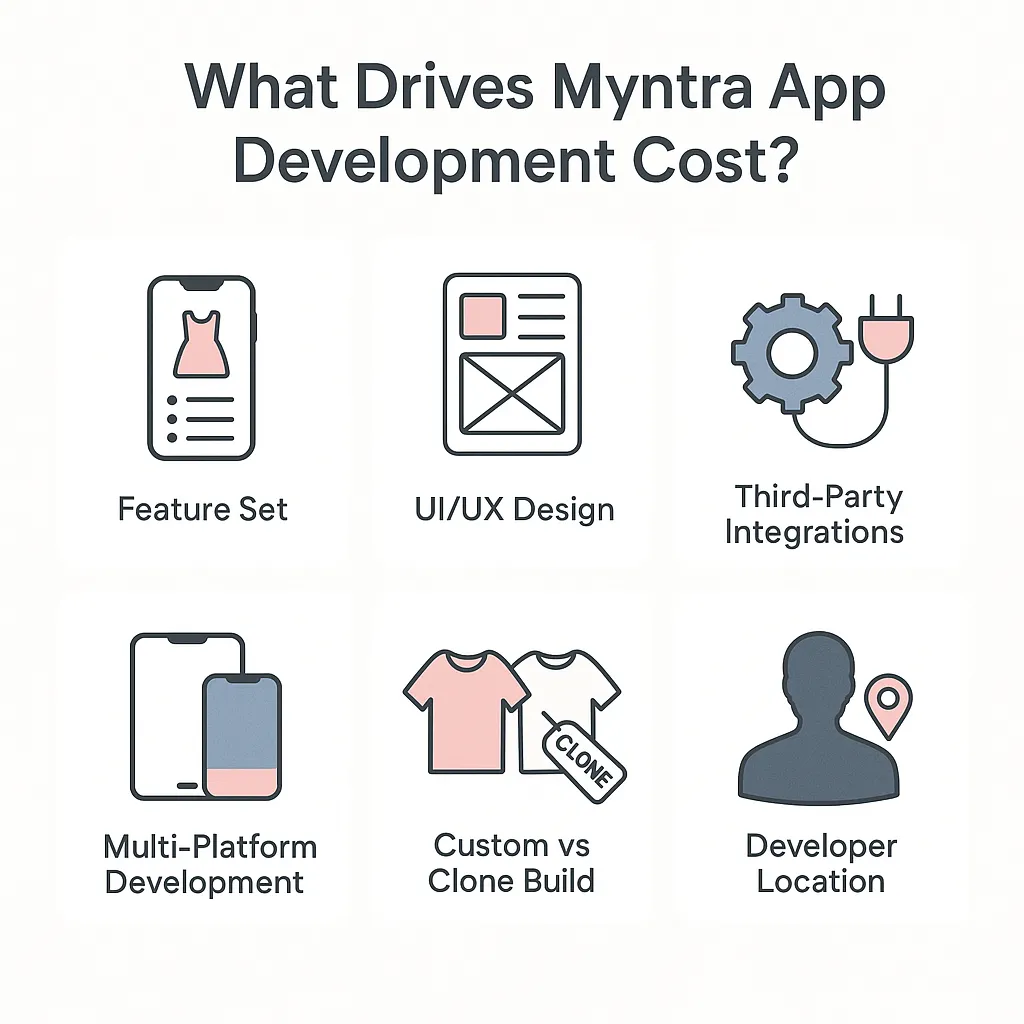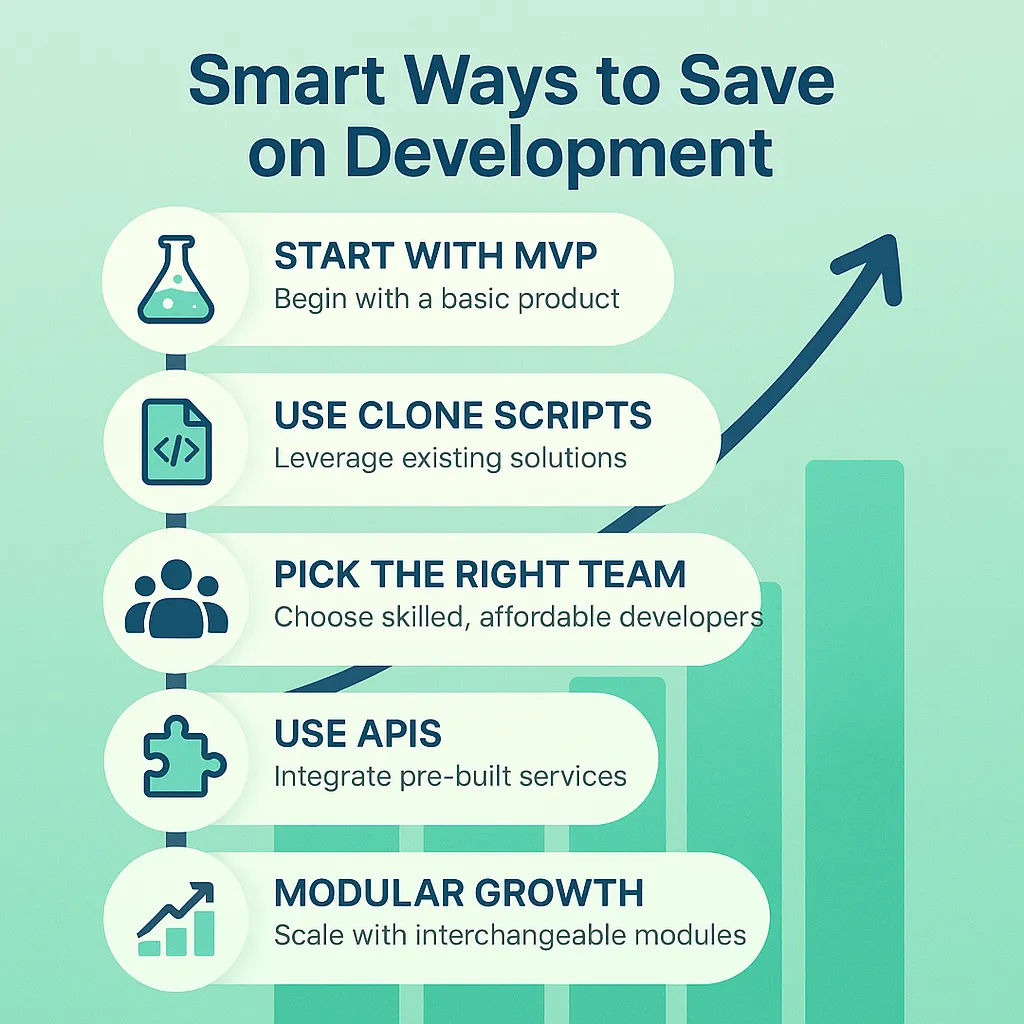Myntra App Development Cost in 2026 : Complete Guide
Create a powerful, customizable streaming solution with Miracuves’ Myntra, equipped with high-performance features and next-gen technology.
Looking to launch your own fashion and lifestyle eCommerce app like Myntra? Before you start shortlisting features or platforms, one crucial question needs clarity:
What’s the real cost to develop a Myntra-like app?
Myntra is more than just a shopping platform — it’s a high-performance retail ecosystem combining personalized product discovery, inventory sync, real-time offers, and seamless checkout experiences. If you’re a startup founder or retail-tech entrepreneur aiming to build something similar, understanding the cost breakdown is essential to budgeting, execution, and go-to-market success.
In this guide, we’ll walk you through the Myntra app development cost, key pricing variables, region-wise differences, hidden expenses, and cost-saving strategies — all without cutting corners on quality or scalability.

Key Factors That Influence Development Cost
Building an app like Myntra isn’t a fixed-price project. Your cost will vary depending on what you build, how you build it, and who builds it.
Here’s what affects the final budget:
Feature Set & Complexity → Basic catalog and cart? Or full personalization engine, wishlists, and AR try-ons?
UI/UX Design Quality → Fashion apps must be visually sharp and responsive. Premium design adds cost — but also drives conversion.
Third-Party Integrations → Payment gateways, ERP, CRM, inventory management, and shipping APIs increase setup and dev time.
Platform Support → Want iOS, Android, and web from day one? Multi-platform support increases development scope and testing effort.
Clone vs Custom Build → White-label Myntra clones cost less and launch faster, while custom apps require more time and investment.
Backend & Scalability → For flash sales, seasonal traffic spikes, and real-time sync, robust infrastructure is essential.
Development Region → Hiring teams from India or Eastern Europe can reduce costs by up to 60% without compromising quality.
Myntra App Development Cost by App Complexity
To give you a clearer picture, here’s a breakdown of average development costs based on app complexity.
This range includes design, development, QA testing, and basic post-launch support — but not licensing, infrastructure, or marketing.
|
App Type
|
Estimated Cost Range (USD)
|
Description
|
|---|---|---|
|
MVP (Minimum Viable Product)
|
$15,000 – $30,000
|
Basic product listings, cart, payment integration, user login/signup, admin dashboard
|
|
Standard Version
|
$30,000 – $70,000
|
Add-on features: search filters, category management, discount engine, order tracking, reviews
|
|
Full-Featured App
|
$70,000 – $150,000+
|
AdvanceIncludes AI recommendations, AR try-on, loyalty programs, advanced analytics, seller paneld UX, real-time tracking, multi-city support, surge pricing, loyalty systems
|
Myntra-Style Delivery Platform Development Cost by Miracuves (2025 Pricing)
To give you a clearer picture, here’s a breakdown of average development costs based on app complexity.
This range includes design, development, QA testing, and basic post-launch support — but not licensing, infrastructure, or marketing.
|
App Type
|
Estimated Cost Range (USD)
|
Description
|
|---|---|---|
|
MVP (Minimum Viable Product)
|
$999 – $1,499
|
Basic product listings, cart, payment integration, user login/signup, responsive UI, and a simple admin dashboard — great for early-stage validation.
|
|
Standard Version
|
$1,500 – $2,099
|
Add-on features including advanced search filters, category management, wishlist, discount engine, order tracking, reviews, and seller dashboards — ideal for mid-level scaling.
|
|
Full-Featured App
|
$2,899 (Miracuves)
|
Complete Myntra-style marketplace with AI recommendations, multi-vendor support, AR try-on options, advanced analytics, scalable architecture, loyalty systems, real-time tracking, and custom UI/UX.
|
Every Myntra-style solution developed by Miracuves includes full source-code ownership, free 60-day post-launch support, and cloud deployment assistance for seamless scalability.
Each project is delivered within 3–9 days, ensuring a fast go-to-market launch.
Launch your Myntra-Style Fashion Marketplace App with Miracuves — built for performance, scalability, and long-term success
Average Cost Estimates by Region
Developer location affects both hourly rate and total build cost. Here’s a rough estimate:
|
Region
|
Hourly Rate (USD)
|
Typical Cost for Standard App
|
|---|---|---|
|
North America
|
$100 – $200/hr
|
$100,000 – $200,000+
|
|
Western Europe
|
$80 – $150/hr
|
$80,000 – $160,000+
|
|
Eastern Europe
|
$40 – $80/hr
|
$40,000 – $90,000+
|
|
India & Southeast Asia
|
$20 – $50/hr
|
$20,000 – $60,000+
|
A reliable offshore partner can help you build a top-tier Myntra alternative with better budget efficiency.
Cost Breakdown by Development Stage : Myntra Clone
Understanding how your budget is distributed across different phases of development helps you plan smarter, avoid overruns, and prioritize what truly matters for launch.
Here’s a typical cost allocation across key stages of Myntra clone app development:
|
Development Stage
|
Estimated % of Total Cost
|
Includes
|
|---|---|---|
|
Discovery & Planning
|
5–10%
|
Market research, competitor analysis, defining user personas, feature scoping, technical requirements.
|
|
UI/UX Design
|
10–15%
|
Wireframing, prototyping, responsive design, visual branding, user experience mapping.
|
|
Frontend & Backend Dev
|
40–50%
|
Core feature development, database architecture, APIs, payment integrations, dashboard and logic build.
|
|
Testing & QA
|
10–15%
|
Manual and automated testing, bug fixing, device/browser compatibility checks, performance tuning.
|
|
Deployment & Launch
|
5–10%
|
App store submission (Android/iOS), server setup, production deployment, performance monitoring tools.
|
|
Maintenance & Updates
|
10–20%
|
Post-launch bug fixes, new features, server maintenance, user support, compliance updates.
|

How to Reduce Myntra App Development Costs (Without Compromising Quality)
Want to build smart? Here’s how to optimize cost without sacrificing quality:
Start lean with an MVP → Focus on essential shopping features, launch early, and iterate
Use clone solutions → Cut development time and cost with scalable white-label alternatives
Work with the right partner → Choose a team experienced in ecommerce — not just general app dev
Leverage APIs → Use reliable, ready-made APIs instead of building every tool from scratch
Design for growth → A modular architecture lets you add features without redoing your backend
A phased roadmap saves both money and time — helping you launch faster and scale smarter.
Choose the Right Development Partner
Even with a solid strategy, launching an ecommerce platform like Myntra is a bold move. Choosing the right development team is key.
Here’s what to look for:
Proven experience in fashion-tech or ecommerce
End-to-end services from planning to launch to scaling
Expertise in multi-vendor management, inventory sync, and frontend performance
Strong understanding of payment gateways and logistics APIs
At Miracuves, we don’t just build apps — we engineer high-performing, user-focused retail platforms. Whether you’re selling fashion, electronics, or niche categories, we help you launch a Myntra-style app tailored to your market.
Focus on your brand. Let us handle the technology. Looking for a trusted tech partner? Hire the Best Myntra Clone Developer to scale your fashion-tech vision.
Conclusion
The cost to develop a Myntra-like app in 2025 ranges from $30,000 for a lean MVP to $250,000+ for a full-scale, feature-rich ecommerce platform — depending on how you build and who builds it.
Ready to launch your fashion app vision?
Talk to Miracuves today for a tailored development roadmap and transparent cost estimate.
Explore our full clone app series to learn more about monetization, scaling, and market-fit strategies.
Frequently Asked Questions
Building a Myntra-style ecommerce app can cost anywhere from $30,000 to $250,000+, depending on features, tech stack, and customization level. However, Miracuves offers a ready-made Myntra clone starting at just $2,899, providing a far more affordable launch path compared to traditional development.
Yes. Clone solutions can cut costs by 40–60% and speed up time-to-market, especially when built by experienced teams.
Traditionally, an MVP takes around 3–4 months, and a fully featured Myntra-style ecommerce platform may take 6–9 months to build. However, with Miracuves’ ready-made Myntra clone solution, you can launch your app in just 3–9 days, including branding and complete deployment support.
Core features include product catalog, user login, cart, payment, and order tracking.
We specialize in ecommerce clone apps with scalable, secure, and high-performance solutions tailored for growth.



